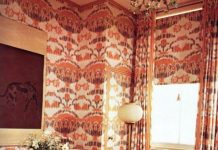Winter Trees: Chamaecyparis, Cupressocyparis And Cupressus – Chamaecyparis or false cypress is a useful genus, from East Asia and North America, with a huge number of cultivars. They range from giant forest trees to smaller forms that can be used as specimen trees, for hedging and as dwarf plants for the rock or scree garden.
Lawson cypress (syn. Cupressus lawsoniana), a conical tree, native to North America, is too large for many gardens, but it has given rise to many cultivars of widely diverging habits All are hardy. Among the best dwarfs is ‘Aurea Densa’, which is rounded and one of the outstanding golden-leaved cultivars.
It grows to 2m (7ft). The slow-growing ’Bleu Nantais’ is another good blue-green, making a cone-shaped mound, about l.5m (5ft) high. Both have needle-like leaves that become scale-like. Taller varieties include the conical ’Ellwoodii’, which is one of the most popular grey-green varieties. The weeping ’Pembury Blue’ has striking bluish-grey foliage.

Hinoki cypress (syn. Cupressus obtusa) is less tolerant of lime than some species, and it is not widely planted, yielding to its many cultivars ’Crippsii’ (syn. ’Crippsii Aurea’) is a rich gold when grown in full sun, making a fine specimen reaching 15m (50ft). ’Nana Gracilis’ is a dwarf cultivar, forming a rough pyramid.
Cupressocyparis. The value of this much maligned hybrid genus between Chamaecyparis nootkatensis and Cupressus macrocarpa lies in the trees’ speed of growth. It is often planted as hedging where a pollution-resistant screen is needed quickly, and it makes a tough, tight hedge, but only if cut regularly. Allowed to grow freely, it gets out of hand.


Lawson cypress
Leyland cypress (x Cupressocyparis leylandii) is the hybrid mostly used for hedging. All are hardy. ’Golconda’, one of the most decorative, forms a narrow cone shape. The scale-like leaves, carried in flattened sprays, are brilliant golden-yellow; the cones are rounded. It is tolerant of clipping. ‘Leighton Green’ develops as a tall, cone-shaped tree with bright green foliage.

Cupressocyparis leylandii
Cypress trees are characteristic of the Mediterranean and are among the stateliest of conifers. They are not always easy to grow away from their native habitat, but they can be used as fine specimens or for hedging. They resent transplanting, so always look for young specimens rather than mature trees.


C. arizonica (left), Chamaecyparis nootkatensis (right)
Smooth cypress (syn. C. arizonica var. glabra), which is native to the South-western United States, is a good specimen where space is limited. It forms a regular cone shape. On young specimens the bark is smooth, reddish-purple and flaking; it thickens and turns to grayish-brown on older trees. The scale-like leaves are glaucous bluish-grey and aromatic; the cones are dark brown.
Monterey cypress ( C. macrocarpa) was once widely used for hedging, but it has largely been superseded by x Cupressocyparis leylandii. Excellent cultivars have been developed from the species, however. Both those listed here are borderline hardy. ’Donard Gold’ forms an elegant obelisk that gradually becomes conical. The bright yellowish-green leaves are aromatic when crushed. ’Goldcrest’ is a desirable smaller version.

Cupressus macrocarpa (cones)



























